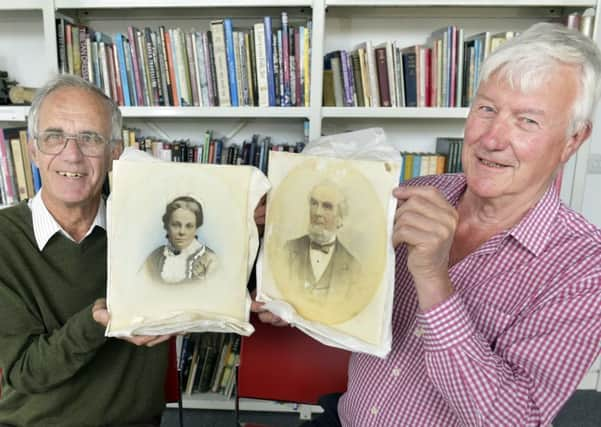Long-lost relatives meet up - after YEP story on exhibition reveals family link


Robert Veale, 71, travelled up from his home in Dorset yesterday to meet his second cousin David McElheran for the first time in an emotional reunion at Leeds Discovery Centre.
The centre houses a collection of rare opalotypes - an early form of photography using opal glass plates - which were donated by Mr Veale in 2015 for an exhibition at Leeds City Museum called the Changing Faces of Leeds.
Advertisement
Hide AdAdvertisement
Hide AdThe cherished photos were taken more than 130 years ago in Leeds by photographers Brown, Barnes and Bell, listed as at 1A Commercial Street, between 1880 and 1886.
They depict his great grandfather Bartolozzi Veale, who lived in Headingley, and his wife Annie, a relative of the 1930s actor and impresario George Arliss.
Bartolozzi Veale, it turns out, was also the great grandfather of Mr McElheran, who saw the photos on the YEP website in a story about the exhibition.
Mr Veale said: “I didn’t know about anything about David until he contacted the museum and asked if they would put him in touch with me as we appear to be related.
Advertisement
Hide AdAdvertisement
Hide Ad“Bartolozzi had 12 children but only six survived. I came from one of his son’s - Richard Blake Veale is my grandfather. David came from one of his daughter’s - Hilda Veale, who married Joseph McElheran.
“That’s how we came to be related,” Mr Veale said.
“It’s amazing to find relatives who you didn’t even know you had.”
Mr Veale said when he donated the photos to the museum, he simply wanted them to be looked after properly and in the city they were taken.
He added: “They were handed to me by a cousin, who has since died, about 30-40 years ago. I’m one of the last remaining people in this Vale family. There aren’t many of us left. So it seemed a good idea to put on display in the city and the museum was happy to have them.”
Advertisement
Hide AdAdvertisement
Hide AdMr McElheran, 75, discovered the link after Googling his great-grandfather’s name. He had been researching his family history for about a year.
He said: “I had almost given up on getting the history of this generation and there it was up in lights.
“It was strange to finally meet Robert. Given how unusual the name Veale is, I’ve never managed to find another. We’ve shared a few memories and now we’re busy putting together what we’ve both found out about our family histories and adding to each other’s experiences.”
Opalotypes were printed on sheets of opaque, translucent white glass and sometimes hand-tinted with colors to enhance their effect.
Advertisement
Hide AdAdvertisement
Hide AdThe basic opalotype technique, involving wet collodion and silver gelatin, was patented in 1857 by Glover and Bold of Liverpool. Opalotypes exploited two basic techniques, using either the transfer of a carbon print onto glass, or the exposure of light-sensitive emulsion on the glass surface to the negative.
Opalotype photography, never common, was practiced in various forms until it waned and disappeared in the 1930s.
Source: Wikipedia